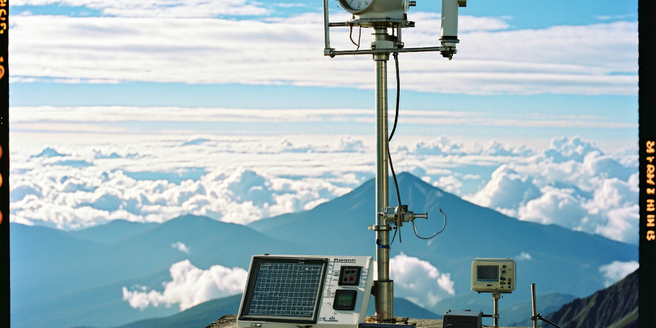
Understanding Air Pressure Basics
Air pressure is the force exerted by the weight of air in the atmosphere on a surface. At sea level, the standard air pressure is about 1013 millibars. Differences in air pressure between different regions of the atmosphere form due to the uneven heating of Earth’s surface by the sun and can cause wind as air moves from areas of higher pressure to lower pressure. By understanding factors like altitude, temperature, and moisture content, you can better understand how air pressure varies. The air pressure decreases with altitude due to the drop in air density. In meteorology, tracking air pressure changes is crucial for weather prediction as sudden drops or rises can indicate forthcoming weather changes, such as storms or clear weather. Observing the basics of air pressure helps in understanding wind patterns and climatic conditions.
The Role of Temperature in Air Pressure Changes
Temperature plays a significant role in air pressure changes because it directly affects the density of the air. When air is heated, its molecules move faster and spread apart, creating lower air pressure. Conversely, cooler air causes molecules to move closer together, resulting in higher air pressure. This variation leads to movement; warm air rises and cool air sinks, creating circulation patterns. Near the Earth’s surface, temperature differences can create significant pressure changes, leading to the development of wind. For example, during a sunny day, the land heats up more quickly than water, creating a low-pressure area over the land and a high-pressure area over the sea. The air moves from high to low-pressure areas, generating wind. Understanding this interaction is crucial for meteorologists when analyzing weather patterns and predicting climate changes.
How Earth’s Rotation Affects Wind Patterns
Earth’s rotation has a powerful influence on wind patterns through what is known as the Coriolis effect. As Earth spins on its axis, it causes moving objects, including air parcels, to be deflected to the right in the northern hemisphere and to the left in the southern hemisphere. This deflection influences the direction of wind and helps in shaping global wind patterns, including trade winds, westerlies, and polar easterlies. For instance, the trade winds found in the tropics near the Equator are a result of this deflection and move from east to west. They play a key role in weather phenomena like hurricanes. Understanding how Earth’s rotation affects wind helps meteorologists predict global weather patterns and aids in climate studies by explaining the movement of large bodies of air within the atmosphere.
The Coriolis Effect and Wind Direction
The Coriolis effect is a significant force caused by Earth’s rotation, impacting wind direction and speed. This effect results in the deflection of wind from its expected path. In the northern hemisphere, winds are deflected to the right, while in the southern hemisphere, they are deflected to the left. The Coriolis effect is crucial in forming large-scale wind patterns, like cyclones and anticyclones. It does not affect wind speed but changes the wind’s travel direction. For instance, it influences trade winds in the tropics, pushing them from the northeast in the north hemisphere and from the southeast in the south hemisphere. The Coriolis effect is a critical component for meteorologists when modeling weather systems and understanding how winds circulate across the globe, impacting global climate conditions.
High and Low Pressure Systems Explained
High and low pressure systems are central to weather phenomena. A high pressure system is an area where the atmospheric pressure is higher than the surrounding areas. In such systems, air descends, resulting in clear skies and calm weather. Conversely, a low pressure system features rising air, which cools and condenses to form clouds and precipitation, often leading to storms or unsettled weather. These systems are essential in understanding weather patterns as they determine atmospheric circulation. High and low pressure systems are driven by temperature variations, due in part to unequal solar heating of the Earth’s surface. The movement of these systems influences wind patterns and temperature distribution. Meteorologists study these systems to predict weather changes, as they significantly affect climate and can also drive extreme weather events.
Global Wind Belts and Their Impact
Global wind belts are large-scale wind patterns found worldwide and play a vital role in Earth’s climate system. These include trade winds, westerlies, and polar easterlies, each found in specific latitudinal zones. Trade winds, occurring in the tropics, blow from east to west and are responsible for driving ocean currents. Westerlies, found in the middle latitudes, move from west to east, influencing weather systems and ocean currents across continents. Polar easterlies, blowing near the poles, affect cold air masses. These global wind belts result from temperature differences and Earth’s rotation, known as the Coriolis effect, creating a complex atmospheric circulation system. They are crucial for distributing heat and moisture globally, impacting agriculture, navigation, and climate. Understanding global wind belts helps predict seasonal weather patterns and assists in long-term climate modeling.
